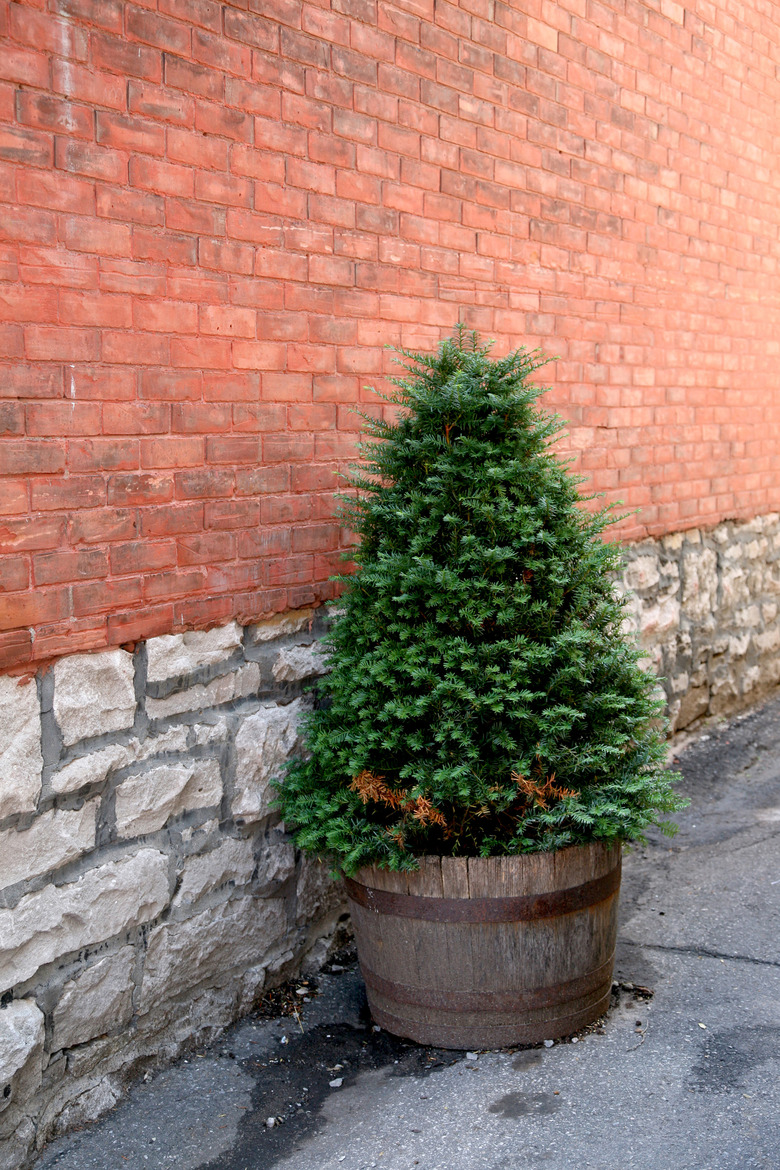The Best Wood Sealant For Contact With Water & Soil In Planter Boxes
Container gardens are a suitable option for gardeners with limited space, poor soil conditions or non-traditional gardening practices. Planter boxes are constructed from a range of materials including wood, metal, porcelain and clay. Wood planters can be made specifically for the purpose of garden plants, but some are also repurposed. Wood barrels, boxes and other containers must be sealed and prepared before planting.
Wood Treatments
Wood Treatments
The best wood treatments not only protect wood from damage but are also non-toxic. When growing edible plants in containers, avoid using copper or zinc sealants, which don't last as long or seal as well asl pressure-treated wood. Chromated copper arsenate, a treatment used on lumber products until 2003, effectively sealed wood from water damage and lengthened its life. Unfortunately, copper and arsenic leach toxins into soil, water and plant root systems. Some of this wood is still used for containers and raised bed gardening, but — just like creosote-treated railroad ties — it should not be used in vegetable gardens or for containerized edible plantings. Instead, seal wood with an oil-based stain. Commercial sealants are sold in nurseries, garden centers and home improvement stores. You can make your own from a combination of paraffin wax, mineral spirits and linseed oil.
Life Spans
Life Spans
Wooden planter boxes made of heartwood last the longest. Heartwood, the center portion of the tree, is stronger than outer sap wood yet tolerant of fungus. Certain tree species like redwood and cedar are naturally able to repel water. If given the option, choose these wood varieties over others like pine or willow.
Drainage
Drainage
While wooden planters need to be sealed, they also must have good drainage, else water collects in the planter and leads to rot and disease. Excess water prematurely ages wood sealants and causes plant death. Before applying sealant to your planter box, ensure that drainage holes are at the bottom. If not, drill holes at least 1/4 inch in diameter. Coat the wood container with sealant, then deposit a layer of crushed porcelain or gravel to the bottom of the container to aid drainage.
Water Gardens
Water Gardens
Water gardeners have additional sealant concerns. Their containers must retain water and keep unwanted moisture from entering the container. You can line the insides of planter boxes with plastic wrap but be certain to provide drainage outlets. Water gardeners have successfully sealed their containers with plastic pond liner material and landscape tarp. They also use marine-grade paint to seal wood containers.
